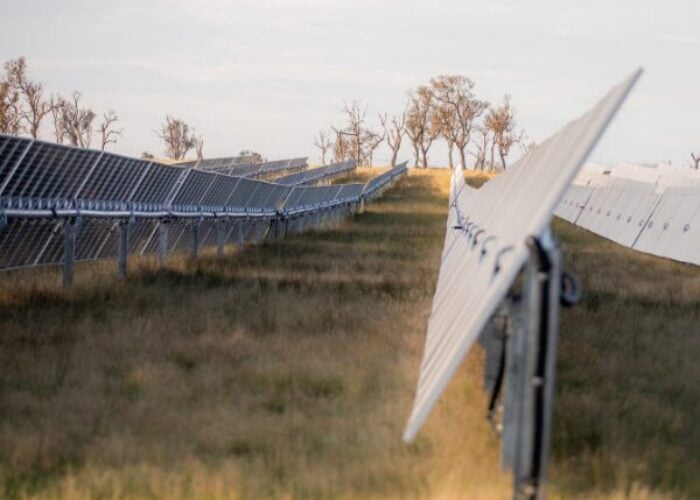Start-up Sol Voltaics has unveiled ‘SolInk’, which is claimed to be an economical nanomaterial that promises to increase the efficiency of crystalline silicon or thin-film solar modules by up to 25% or more. Gallium arsenide nanowires are fabricated via a high-throughput process called ‘Aerotaxy’ invented by company founder and Lund University professor Lars Samuelson.
Problem
Gallium arsenide solar cells cost far more to produce than crystalline silicon or thin film cells, thereby confining the material to niche market segments.
Try Premium for just $1
- Full premium access for the first month at only $1
- Converts to an annual rate after 30 days unless cancelled
- Cancel anytime during the trial period
Premium Benefits
- Expert industry analysis and interviews
- Digital access to PV Tech Power journal
- Exclusive event discounts
Or get the full Premium subscription right away
Or continue reading this article for free
Solution
With SolInk, module manufacturers can make commercially feasible, high-efficiency gallium arsenide solar modules or multi-junction solar modules combining gallium arsenide and crystalline silicon. SolInk also enables light concentration without the use of optics or mechanical components. Nanowires need only cover a small portion of the surface area of a crystalline silicon or thin film solar cell to achieve substantially all of the benefits of adding gallium arsenide. Sol Voltaics researchers claim that indium phosphide nanowires covering just 12% of the substrate surface produced a solar cell with an efficiency of 13.8%. The results were certified by the Fraunhofer Institute. The phenomenon, called Wave Concentrated Photovoltaics, combined with the other advantages of gallium arsenide nanowires, leads to better performance for SolInk.
Applications
Crystalline silicon and thin-film solar cells.
Platform
Aerotaxy creates nanomaterials by suspending and mixing active materials in carrier gas streams. The active materials bond to form larger, uniform structures while in flight: nanowires are literally grown in air. In this way, Aerotaxy can generate tens of billions of nanowires per second on a continuous basis. The finished nanowires can be integrated into a solar panel or other products, or can be stored indefinitely.
Availability
Sol Voltaics anticipates producing functional solar cells with gallium arsenide nanowires for demonstration by the end of 2013. Commercial production is expected to begin in 2015 and move into volume production in 2016.





